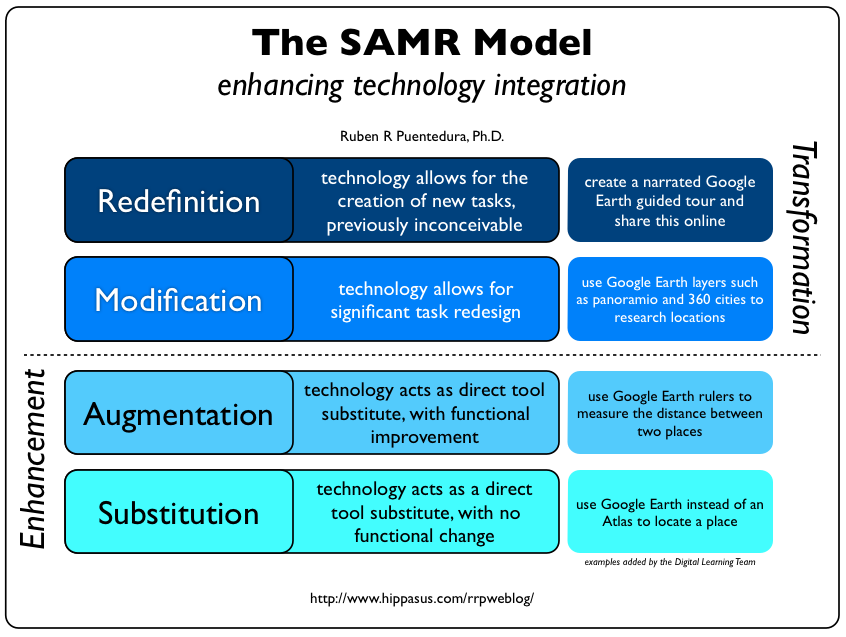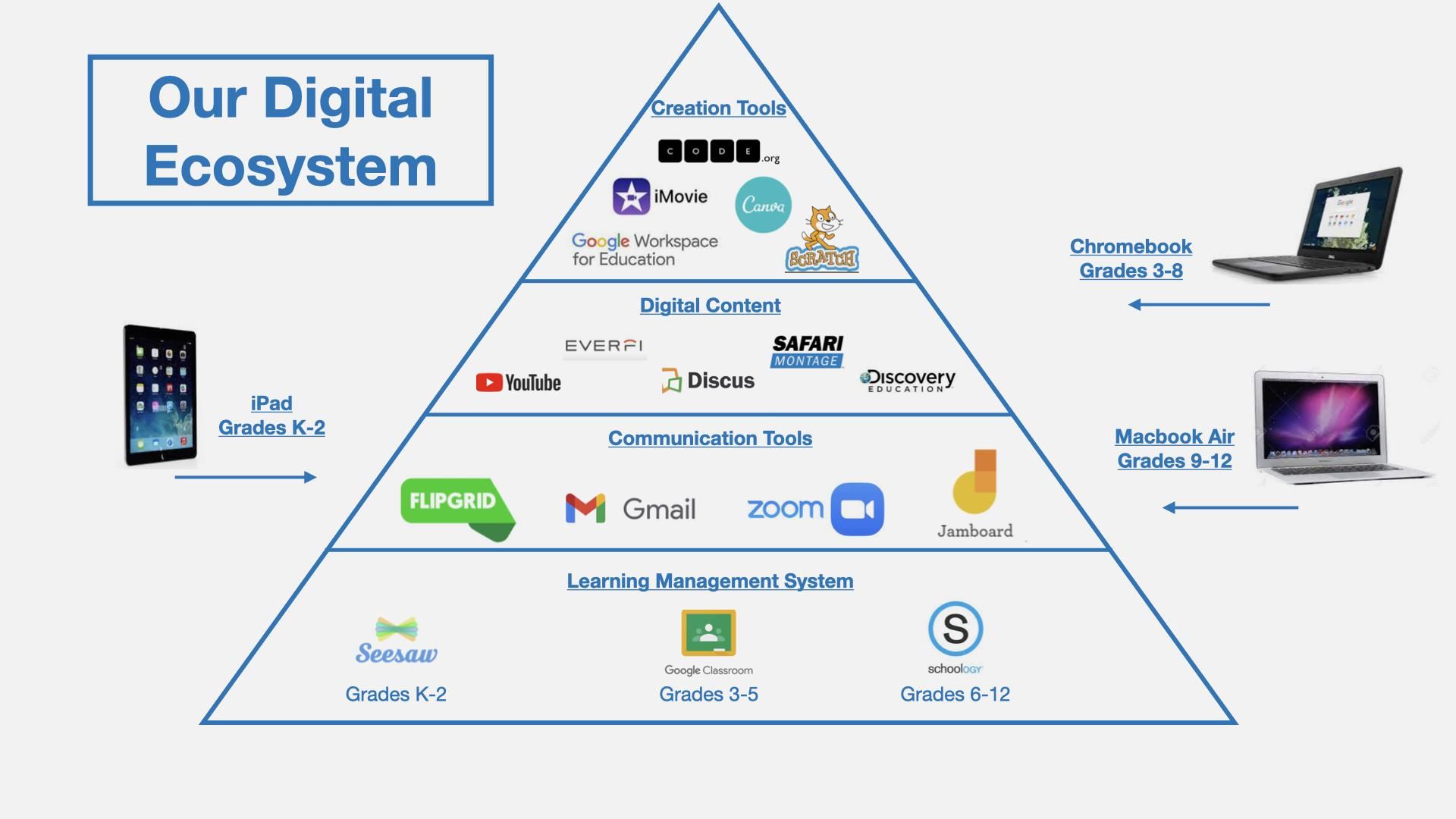Strategic Objective
-
Close the second-level digital divide for all students by empowering them to use technology for creation, collaboration, communication, and critical thinking, rather than for passive consumption.
Engage | Empower | Evolve
A message from Instructional Technology Director, Howard Bissell
-
 Our district has done a tremendous job of providing our students with access to high-quality technology through our 1:1 device initiative and high-speed internet access at each grade level; however, this is only part of the experience that will prepare them for what they will be expected to do by employers when they step outside of our K-12 system.
Our district has done a tremendous job of providing our students with access to high-quality technology through our 1:1 device initiative and high-speed internet access at each grade level; however, this is only part of the experience that will prepare them for what they will be expected to do by employers when they step outside of our K-12 system.Our Instructional Technology Department is dedicated to closing what we see as a second-level digital divide created by the future demands our students will have placed on them by globalization, an information revolution fueled by artificial intelligence, and the automation economy. It’s a world much different than the one that existed when all of us parents were in school or even for our students who graduated just 5 years ago.
We live in a world where recalling facts can be done by machines; where anyone can “Google” anything, at any time. We must shift our approach so that students are not merely expected to consume and repeat information but instead are given the opportunity to create and apply their own understanding, showing their learning, and ultimately designing their own future. We must teach them how to communicate, create, collaborate, and solve problems in the digital world. We must strive to make their experiences inside of the classroom as relevant and interesting as the experiences they have outside of school. We have a moral imperative to increase their access and opportunity to engage with technology in impactful ways.
Three key principles guide the work of our instructional technology team:
-
- Development of foundational digital literacy and digital citizenship skills in our students.
- Creating learning conditions that foster deep learning experiences and student development of power skills.
- Providing personalized professional learning opportunities that allow teachers to address specific areas of interest and professional growth.
The intended outcome is to provide students with access to the following experiences:
-
- Digital fluency/literacy across multiple digital platforms
- Communication across multiple digital platforms
- Collaboration/team building/peer coaching
- Use of media and data literacy skills to think critically
- Computational thinking skills and programming
- Flexibility/adaptability in authentic situations
- Active learning through creation instead of passive learning through consumption of information
- Ability to curate digital evidence of academic and personal growth over time
- Reflection on personal growth through the ongoing development of a digital portfolio
Our Digital Learning Coaches implement a professional learning model that features:
-
- instructional coaching partnerships for co-planning, co-teaching, implementation, observation, reflection, and iteration of innovative learning strategies.
- the use of a digital learning framework (SAMR) in planning to provide deep learning experiences for students.

Our Digital Ecosystem
-
Each of our students in grades Kindergarten through twelve have access to a personal device and an interconnected suite of software and applications. This digital ecosystem gives students the opportunity to learn, communicate, and create in authentic ways.


